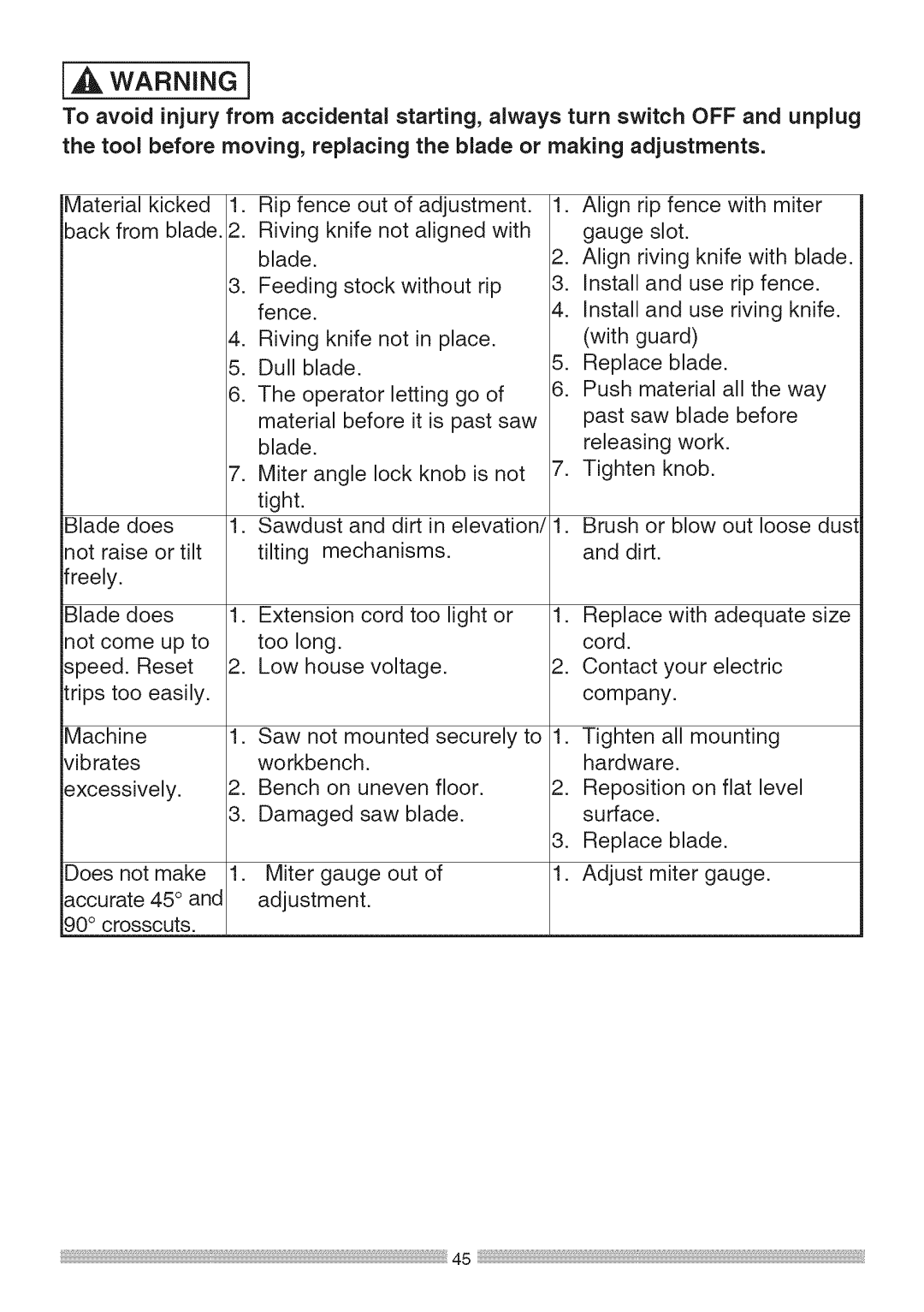
1_ WARNING ]
To avoid injury from accidental starting, always turn switch OFF and unplug
the tool before moving, replacing the blade or making adjustments.
Material kicked back from blade.
Blade does not raise or tilt freely.
1. | Rip fence out of adjustment. | 1. Align rip fence with miter | ||||
2. | Riving knife not aligned | with |
| gauge slot. | ||
| blade. |
| 2. | Align riving knife with blade. | ||
3. | Feeding stock without | rip | 3. | Install and use rip fence. | ||
| fence. |
| 4. | Install and use riving knife. | ||
4. | Riving knife not in place. |
| (with guard) | |||
5. | Dull | blade. |
| 5. | Replace | blade. |
6. | The operator letting go of | 6. | Push material all the way | |||
| material before it is past saw |
| past saw | blade before | ||
| blade. |
|
| releasing | work. | |
7. | Miter | angle lock knob is not | 7. | Tighten knob. | ||
| tight. |
|
|
|
|
|
1. | Sawdust and dirt in elevation/ 1. Brush or blow out loose dust | |||||
| tilting | mechanisms. |
|
| and dirt. |
|
Blade does | 1. | Extension | cord too light or |
not come up to |
| too long. |
|
speed. Reset | 2. | Low house | voltage. |
trips too easily. |
|
|
|
1.Replace with adequate size cord.
2.Contact your electric company.
Machine | 1. | Saw not mounted | securely | to 1. | Tighten all mounting |
vibrates |
| workbench. |
|
| hardware. |
excessively. | 2. | Bench on uneven | floor. | 2. | Reposition on flat level |
| 3. | Damaged saw blade. |
| surface. | |
|
|
|
| 3. | Replace blade. |
Does not make | 1. | Miter gauge out of | 1. | Adjust miter gauge. | |
accurate 45° and |
| adjustment. |
|
|
|
90° crosscuts. |
|
|
|
|
|
